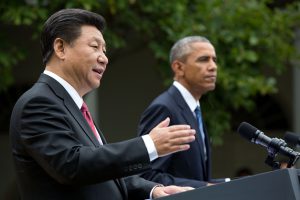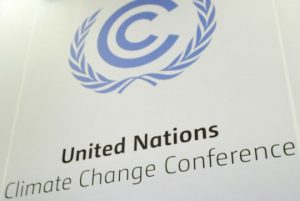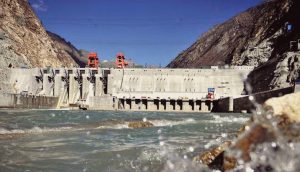“Paris will be the departure point, rather than final destination.”
So goes the metaphor offered by those tasked with delivering a meaningful climate deal in Paris in December.
With four weeks to go to the opening of the two-week climate summit, policy makers, officials, activists and interested parties are divided on whether on the extent that an agreement will be catalyst for big cuts in carbon. Will the climate summit be the Train à Grande Vitesse that carries the world speedily towards the deep emissions cuts needed to escape catastrophic global warming? Or will it resemble a rickety suburban commuter train that breaks down frequently because of political clutter on the track?
The UN’s climate arm said today that the cumulative impact of climate plans submitted to the UN, known as Intended Nationally Determined Contributions (INDCs) are grounds for optimism despite the slow progress in completing the negotiating text that will be the basis of a Paris agreement.
The submission of INDCs by 146 countries has put the world on a path towards avoiding runaway climate change, although the UN’s climate chief Christiana Figueres said much more effort will be needed.
The UN’s
report released today said that together, the INDCS cover 86% of global greenhouse gas emissions – almost four times the level of the first commitment period of the Kyoto Protocol.
“The INDCs have the capability of limiting the forecast temperature rise to around 2.7 degrees Celsius by 2100, by no means enough but a lot lower than the estimated four, five, or more degrees of warming projected by many prior to the INDCs,” Figueres said.
INDCs have compelled the world’s biggest emitters, developed and developing, to declare their own plans to shift from fossil fuels, plans that will need to be revisited and made more ambitious in the near future.
Figueres and Laurence Tubiana, France’s climate ambassador, insisted last week in at Chatham House London that important progress had been made, particularly when compared with the Copenhagen climate summit six years ago, (COP21).
Top-down international action in 2009 “was in a really bad place;” Figueres said, while in run up to Paris, most major emitters have adopted a more consensual bottom-up approach. And despite the confusing noise that surrounds these complex negotiations, the signals, she said, are clear.
"There will be an agreement because, from where I stand, I see only increasing political will on the part of all governments," Figueres told a press conference today. The Paris deal would need to foster "a path of continuous improvement" to keep the world within a 2C threshold.
“Government pledges all stem from the national interest of these countries, and hence they stand a much better chance of being implemented than anything that is external and punitive,” she explained, adding: “Many nations will overachieve on goals that are based on what is seen as achievable today".
Shifting ground
Optimists are heartened by the growing willingness of countries to commit to a decisive shift away from fossil fuels, and by landmark agreements such as the bilateral climate co-operation between the US and China. Meanwhile, the cost of renewables such as solar has fallen sharply, and the toxic smog that fossil fuels have created in the megacities of the emerging economies is forcing political action.
Technological innovation is ushering in affordable storage for renewable energy and electric vehicles, while power generation and distribution is being transformed by increasingly localised, smarter power grids.
Moreover, the financial sector is now more aware of the risks that climate change and the energy transformation could pose to trillions of dollars of investment in fossil fuels, and that a Paris agreement that anchors emissions cuts that can be deepened over time will render renewables a safer bet in the future.
But despite these trends, there is still caution in the expectations for Paris.
Clash about cash
Chastened by the disappointment of failure in Copenhagen in 2009, some observers caution that mistrust of rich world promises on climate finance for poor countries could still complicate progress towards a deal.
Will poor countries most vulnerable to climate impacts sign an agreement, unless they can see how the US$100 billion a year in climate finance that has been promised will be delivered? Can developed countries offer more, when some, such as the US, are facing determined political opposition to any deal back home? And can the rich world convince the vulnerable that private sector money will come in sufficient quantity to help countries cope with a warming planet?
Besides the moral case for delivering on commitments of climate cash – the US$100 billion figure is “peanuts” says Christiana Figueres – the willingness to implement low carbon transformation in hugely-coal dependent India will depend on sufficient flows of money and technology from developed countries.
What’s more important, she points out, is that the estimated US$90 trillion that will be spent on the world’s infrastructure over the next 15 years, is spent on low-carbon energy and transport, to avoid locking the world into high carbon development.







